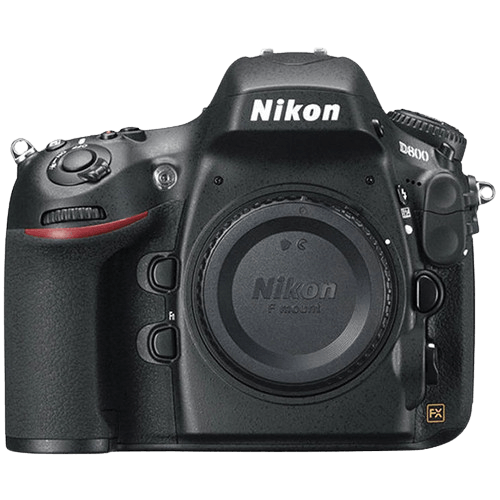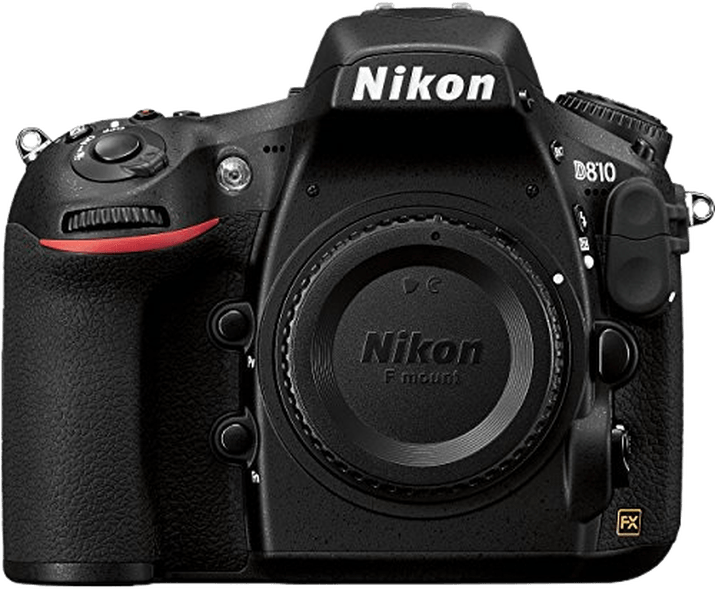Nikon D800 vs D810 Comparison
Nikon D800

Nikon D810

The Nikon D810 emerges as the winner with a score of 72/100, slightly ahead of the Nikon D800, which scores 69/100. Both cameras share common specifications such as being DSLR cameras, having the same announcement dates, and identical camera sizes of 146 x 123 x 82mm.
The D810 outperforms the D800 with a lighter weight of 980g, compared to the D800’s 1000g, and a higher launch price of $3300, indicating its enhanced features. On the other hand, the D800 is more affordable with a launch price of $2999, which may appeal to budget-conscious buyers.
Considering the scores and specifications, the Nikon D810 proves to be a better camera overall, though the D800 still offers value for those seeking a more budget-friendly option.
Nikon D800 vs D810 Overview and Optics
The Nikon D810 emerges as the winner in the optics comparison with a score of 76, while the Nikon D800 scores 74. Both cameras share several specifications, including 36.3 megapixels, a CMOS sensor, full-frame sensor size, Nikon F FX lens mount, and no image stabilisation.
The D810’s superiority is evident in its shooting speed and processor. With a shooting speed of 5, compared to the D800’s 4, the D810 allows for faster continuous shooting. The D810 also boasts a more advanced Expeed 4 processor, contributing to enhanced image quality and better performance.
Moreover, the D810’s DXOMARK score for the sensor is 97, which is higher than the D800’s score of 95. This higher score highlights the D810’s improved sensor capabilities, resulting in better image quality and dynamic range.
However, the D800 is not without its advantages. Despite its lower overall score, it still offers a high-quality sensor, a full-frame sensor size, and a Nikon F FX lens mount. These features enable the D800 to produce excellent images and offer compatibility with a wide range of lenses.
When comparing the optics of the Nikon D800 and D810, the D810 has a slight edge due to its faster shooting speed, advanced processor, and higher DXOMARK sensor score. However, the D800 remains a strong contender with its shared specifications and high-quality sensor. Ultimately, the choice between these two cameras will depend on the photographer’s priorities and specific needs, as both offer impressive optics and performance.
Nikon D800 vs D810 Video Performance
The Nikon D810 outperforms the Nikon D800 in video capabilities, boasting a higher video score of 70/100 as opposed to the D800’s 57/100. Both cameras share some common video specifications, including Full HD max video resolution and 1920 x 1080 max video dimensions. Additionally, both cameras have built-in time-lapse functionality, providing users with creative options for capturing dynamic scenes.
The winning camera, the Nikon D810, excels with its higher max video frame rate of 60fps, compared to the D800’s 30fps. This higher frame rate allows for smoother, more detailed video capture, especially in action-packed situations or when recording fast-moving subjects. The increased frame rate significantly contributes to the D810’s superior video performance.
While the Nikon D800 may have a lower video score, it still offers solid video performance with its Full HD resolution, 1920 x 1080 max video dimensions, and built-in time-lapse functionality. However, its 30fps max video frame rate does not match the D810’s 60fps, resulting in a less fluid video capture experience.
When comparing the video capabilities of the Nikon D800 and D810, it is clear that the D810 is the superior choice due to its higher video score and increased max video frame rate. While the D800 still provides satisfactory video performance, it falls short in comparison to the D810. For users seeking the best video capabilities, the Nikon D810 is the definitive choice.
Nikon D800 vs D810 Features and Benefits
The Nikon D810 emerges as the winner in the feature comparison with a score of 59/100, while the Nikon D800 scores 57/100. Both cameras share several specifications, including a 3.2-inch screen size, the absence of a touchscreen and flip screen, no GPS, WIFI connectivity, and no Bluetooth.
The Nikon D810 surpasses the D800 in terms of screen resolution, boasting 1,229,000 dots compared to the D800’s 921,000 dots. This higher resolution provides the D810 with a clearer and more detailed display, enhancing the user experience while composing shots and reviewing images.
While the Nikon D800 does not outshine the D810 in any specific feature, it is still a reliable and high-quality camera. Its 57/100 feature score indicates that the camera possesses a solid set of features that enable users to capture stunning images and videos. The D800 remains a viable option for photographers who prefer a more budget-friendly camera without sacrificing overall performance.
After examining the features of both the Nikon D800 and D810, it is evident that the D810 holds a slight advantage due to its higher screen resolution. However, both cameras offer a strong set of features that cater to a variety of photography needs. The Nikon D800 remains a competitive option for those seeking a more affordable camera, while the D810 serves as an excellent choice for photographers who prioritize display quality.
Nikon D800 vs D810 Storage and Battery
The Nikon D810 outperforms the Nikon D800 in storage and battery, scoring 79/100 compared to the D800’s 71/100. Both cameras have two memory card slots and accept SD, SDHC, SDXC, and Compact Flash cards. The D810 also supports UDMA cards, giving it an advantage in storage options.
The D810’s battery life is significantly longer at 1200 shots, while the D800 only lasts for 900 shots. Both cameras use the same battery type, the EN-EL15, and neither offers USB charging. The longer battery life of the D810 provides an edge for extended shooting sessions.
The D800 does not have any advantages over the D810 in storage and battery. Its lower score is due to its shorter battery life and lack of support for UDMA cards.
The Nikon D810 proves to be superior in storage and battery, with its extended battery life and additional compatibility with UDMA cards. The D800 falls behind in this category, making the D810 the better choice for photographers who need longer-lasting power and more storage options.
Nikon D800 vs D810 Alternatives
Still not sure which camera is right for you? These related camera comparisons may inspire you:
